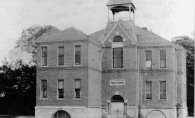Early European visitors to Lake Minnetonka noticed lots of conical mounds on high points around the shore. These pioneers first started settling along the Mississippi River and found thousands of mysterious burial mounds in prominent spots overlooking the water.
Few believed that ancestors of the Native Americans could have built such intricate monuments, so instead many believed a long-lost race of “mound builders” lived here but their civilization disappeared. Others theorized that the Vikings ventured inland to teach the Native Americans their burial technique, but this theory falls flat when some of the mounds were dated back 6,000 years before the Norsemen even set foot on North America in 1000 A.D. Finally, in 1880, the Smithsonian confirmed that these mounds were indeed built by ancestors of the Native Americans after finding Indian-made objects inside.
While simple conical mounds are the most common and oldest, effigy mounds in the shape of animals—usually birds, bears, bison, turtles and lizards—were discovered mostly from eastern Iowa to the shores of Lake Michigan.
The earth to build these burial mounds was carried entirely by hand, probably in baskets, and valuable artifacts were placed inside perhaps to help the dead in their journey to the next world. Copper from the Great Lakes, obsidian from the Rocky Mountains, shark teeth from Chesapeake Bay, pearls from the Gulf of Mexico, and mica from the Appalachian Mountains have been found in the mounds as evidence of an extensive trade network.
Little is known about these ancient Native Americans, often called “Woodland Indians” or even “Effigy Mounds People,” but evidence shows that people have been living in this area for about 12,000 years.
An expedition written by Stephen Denison Peet in 1883 recalls, “On the excursion to the Lake the series of mounds near the Chapman House were again visited… They consist of ordinary tumuli interspersed with oblong mounds, and are situated on the back of the lake overlooking the water, and bordering a stream that empties here.” That same year, Theodore Lewis charted all the existing mounds; however, many of the mounds that made Mound famous have since been plowed over for farms.
In Excelsior, a circle of mounds was discovered in a low meadow with a sort of wall near the shore of the lake. Sixty-nine burial mounds were charted and one contained 35 skulls arranged in a circular pattern. Considering the number of mounds, this was likely the site of an early village.









